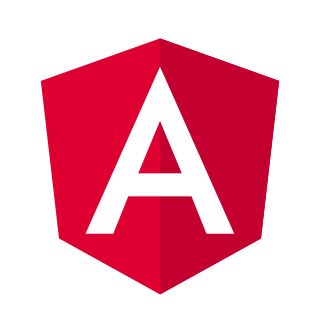 W
WAngular is a TypeScript-based open-source web application framework led by the Angular Team at Google and by a community of individuals and corporations. Angular is a complete rewrite from the same team that built AngularJS.
 W
WAppcelerator is a privately held mobile technology company based in San Jose, California. Its main products are Titanium, an open-source software development kit for cross-platform mobile development, and the Appcelerator Platform, software that provides cross-platform native mobile app development using JavaScript, mobile backend as a service (MBaaS), mobile test automation, crash detection and performance management, and mobile analytics.
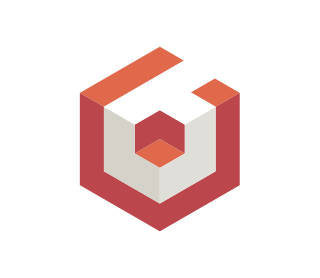 W
WBabylon.js is a real time 3D engine using a JavaScript library for displaying 3D graphics in a web browser via HTML5. The source code is available on GitHub and distributed under the Apache License 2.0.
 W
WBlend4Web is a free and open source framework for creating and displaying interactive 3D computer graphics in web browsers.
 W
WBootstrap is a free and open-source CSS framework directed at responsive, mobile-first front-end web development. It contains CSS- and (optionally) JavaScript-based design templates for typography, forms, buttons, navigation, and other interface components.
 W
WBrowserify is an open-source JavaScript tool that allows developers to write Node.js-style modules that compile for use in the browser.
 W
WCascade Framework is a free CSS framework for creating websites and web apps. Similar to Bootstrap and Foundation, it contains a wide range of HTML and CSS-based interface components, as well as optional JavaScript extensions.
 W
WCodeMirror is a JavaScript component that provides a code editor in the browser. It has a rich programming API and a focus on extensibility.
 W
WDojo Toolkit is an open-source modular JavaScript library designed to ease the rapid development of cross-platform, JavaScript/Ajax-based applications and web sites. It was started by Alex Russell, Dylan Schiemann, David Schontzler, and others in 2004 and is dual-licensed under the modified BSD license or the Academic Free License.
 W
WEmber.js is an open-source JavaScript web framework, utilizing a component-service pattern. It allows developers to create scalable single-page web applications by incorporating common idioms, best practices, and patterns from other single-page-app ecosystem patterns into the framework.
 W
WExt JS is a pure JavaScript application framework for building interactive cross platform web applications using techniques such as Ajax, DHTML and DOM scripting. It can be used as a simple component framework, but also as a full framework for building single-page applications.
 W
WGlow is an open-source JavaScript library created by the BBC. Development on Glow began in 2007, and it was publicly released under an Apache License in July 2009.
 W
WGoogle Closure Tools is a set of tools to help developers build rich web applications with JavaScript. It was developed by Google for use in their web applications such as Gmail, Google Docs and Google Maps.
 W
WGoogle Closure Tools is a set of tools to help developers build rich web applications with JavaScript. It was developed by Google for use in their web applications such as Gmail, Google Docs and Google Maps.
 W
WGoogle Web Toolkit, or GWT Web Toolkit, is an open-source set of tools that allows web developers to create and maintain JavaScript front-end applications in Java. Other than a few native libraries, everything is Java source that can be built on any supported platform with the included GWT Ant build files. It is licensed under the Apache License 2.0.
 W
WIonic is a complete open-source SDK for hybrid mobile app development created by Max Lynch, Ben Sperry, and Adam Bradley of Drifty Co. in 2013. The original version was released in 2013 and built on top of AngularJS and Apache Cordova. However, the latest release was re-built as a set of Web Components, allowing the user to choose any user interface framework, such as Angular, React or Vue.js. It also allows the use of Ionic components with no user interface framework at all. Ionic provides tools and services for developing hybrid mobile, desktop, and Progressive Web Apps based on modern web development technologies and practices, using Web technologies like CSS, HTML5, and Sass. In particular, mobile apps can be built with these Web technologies and then distributed through native app stores to be installed on devices by utilizing Cordova or Capacitor.
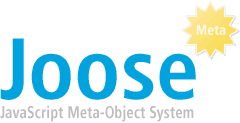 W
WJoose is an open-source self-hosting metaobject system for JavaScript with support for classes, inheritance, mixins, traits and aspect-oriented programming.
 W
WJsPHP is a cross-browser JavaScript library designed to make the PHP application programming interface (API) available in JavaScript environments. It was started by Kevin van Zonneveld as php.js and released as an open-source project in 2008. In late 2011 John Elliot forked the php.js project to JsPHP and released a web-based collaborative integrated development environment (IDE) at www.jsphp.com in an effort to rejuvenate and breathe new life into the project, and as an excuse to develop a content management system (CMS) with features for software developers, such as unit testing and benchmarking.
 W
WjQWidgets is a software framework with widgets, themes, input validation, drag & drop plug-in, data adapters, built-in WAI-ARIA accessibility, internationalization and MVVM support. It is built on the open standards and technologies HTML5, CSS, JavaScript and jQuery. This library is used for developing responsive web and mobile applications. Some developers consider jQWidgets one of the top alternatives to the open-source jQuery UI.
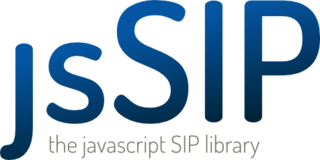 W
WJsSIP is a library for the programming language JavaScript. It takes advantage of SIP and WebRTC to provide a fully featured SIP endpoint in any website. JsSIP allows any website to get real-time communication features using audio and video. It makes it possible to build SIP user agents that send and receive audio and video calls as well as and text messages.
 W
WKaTeX is a cross-browser JavaScript library that displays mathematical notation in web browsers. It puts special emphasis on being fast and easy to use.
 W
WLess is a dynamic preprocessor style sheet language that can be compiled into Cascading Style Sheets (CSS) and run on the client side or server side. Designed by Alexis Sellier, Less is influenced by Sass and has influenced the newer "SCSS" syntax of Sass, which adapted its CSS-like block formatting syntax. Less is an open source. Its first version was written in Ruby; however, in the later versions, use of Ruby has been deprecated and replaced by JavaScript. The indented syntax of Less is a nested metalanguage, as valid CSS is valid Less code with the same semantics. Less provides the following mechanisms: variables, nesting, mixins, operators and functions; the main difference between Less and other CSS precompilers being that Less allows real-time compilation via less.js by the browser.
 W
WLibscore was a web-based tool that scanned the one-million most popular websites to collect statistics on JavaScript library usage. It collected data on jQuery plugins, JavaScript variables produced by non-jQuery plugins, and JavaScript libraries loaded via RequireJS.
 W
WLightbox is a JavaScript library that displays images and videos by filling the screen, and dimming out the rest of the web page.
 W
WThe Lively Kernel is an open-source web programming environment. It supports desktop-style applications with rich graphics and direct manipulation abilities, but without the installation or upgrade troubles of conventional desktop applications. Development began at Sun Microsystems Laboratories in Menlo Park, California, and later moved to the Hasso Plattner Institute in Potsdam-Babelsberg near Berlin.
 W
WLodash is a JavaScript library which provides utility functions for common programming tasks using the functional programming paradigm.
 W
WMathJax is a cross-browser JavaScript library that displays mathematical notation in web browsers, using MathML, LaTeX and ASCIIMathML markup. MathJax is released as open-source software under the Apache License.
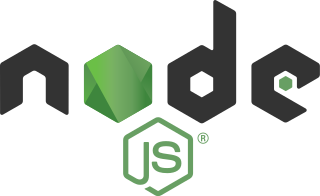 W
WNode.js is an open-source, cross-platform, back-end, JavaScript runtime environment that executes JavaScript code outside a web browser. Node.js lets developers use JavaScript to write command line tools and for server-side scripting—running scripts server-side to produce dynamic web page content before the page is sent to the user's web browser. Consequently, Node.js represents a "JavaScript everywhere" paradigm, unifying web-application development around a single programming language, rather than different languages for server-side and client-side scripts.
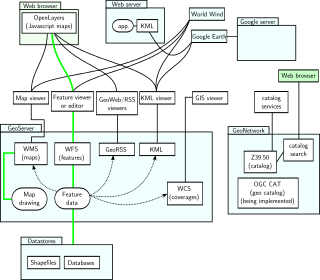 W
WOpenLayers is an open-source JavaScript library for displaying map data in web browsers as slippy maps. It provides an API for building rich web-based geographic applications similar to Google Maps and Bing Maps.
 W
WOpenUI5 is a JavaScript application framework designed to build cross-platform, responsive, enterprise-ready applications. It is an open-source project maintained by SAP SE available under the Apache 2.0 license and open to contributions. OpenUI5's core is based on JavaScript, jQuery, and LESS. The library's feature set includes model–view–controller patterns, data binding, its own UI-element library, and internationalisation support.
 W
WPDF.js or pdf.js is a JavaScript library that renders Portable Document Format (PDF) files using the web standards-compliance HTML5 Canvas. The project is led by the Mozilla Foundation after Andreas Gal launched it in 2011.
 W
WPlotly is a technical computing company headquartered in Montreal, Quebec, that develops online data analytics and visualization tools. Plotly provides online graphing, analytics, and statistics tools for individuals and collaboration, as well as scientific graphing libraries for Python, R, MATLAB, Perl, Julia, Arduino, and REST.
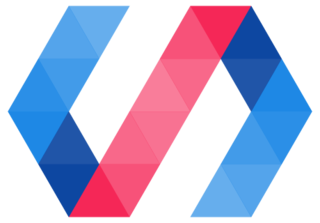 W
WPolymer is an open-source JavaScript library for building web applications using Web Components. The library is being developed by Google developers and contributors on GitHub. Modern design principles are implemented as a separate project using Google's Material Design design principles.
 W
WProcessing.js is a JavaScript port of Processing, a programming language designed to write visualisations, images, and interactive content. It allows web browsers to display animations, visual applications, games and other graphical rich content without the need for a Java applet or Flash plugin.
 W
WPyjs, is a rich Internet application framework for developing client-side web and desktop applications in Python. The resulting applications can be run in a web browser or as standalone desktop applications.
 W
Wqooxdoo is an open-source Ajax web application framework. It is an LGPL- and/or EPL-licensed client-side and server-agnostic solution, and includes support for professional JavaScript development, a graphical user interface (GUI) toolkit and high-level client-server communication.
 W
WReact is an open-source, front end, JavaScript library for building user interfaces or UI components. It is maintained by Facebook and a community of individual developers and companies. React can be used as a base in the development of single-page or mobile applications. However, React is only concerned with rendering data to the DOM, and so creating React applications usually requires the use of additional libraries for state management and routing. Redux and React Router are respective examples of such libraries.
 W
WRGraph is a HTML5 software library for charting written in native JavaScript. It was created 2008. RGraph started as an easy-to-use commercial tool based on HTML5 canvas only. It became freely available to use under the open-source MIT license, and supports more than 50 chart types in both SVG and canvas.
 W
WSencha Touch is a user interface (UI) JavaScript library, or web framework, specifically built for the Mobile Web. It can be used by Web developers to develop user interfaces for mobile web applications that look and feel like native applications on supported mobile devices. It is based on web standards such as HTML5, CSS3 and JavaScript. The goal of Sencha Touch is to facilitate quick and easy development of HTML5 based mobile apps which run on Android, iOS, Windows, Tizen and BlackBerry devices, simultaneously allowing a native look and feel to the apps.
 W
WSocket.IO is a JavaScript library for realtime web applications. It enables realtime, bi-directional communication between web clients and servers. It has two parts: a client-side library that runs in the browser, and a server-side library for Node.js. Both components have a nearly identical API. Like Node.js, it is event-driven.
 W
WStormEngineC is a 3D graphics library written in JavaScript and using several HTML5 features like WebGL, WebCL and WebSockets. It provides an easy way to load objects in OBJ and Collada format and add the physical simulation for them. The source code is free and is hosted in GitHub.
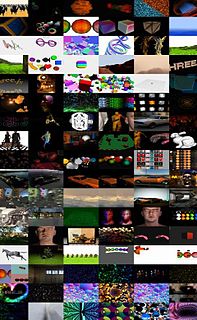 W
WThree.js is a cross-browser JavaScript library and application programming interface (API) used to create and display animated 3D computer graphics in a web browser using WebGL. The source code is hosted in a repository on GitHub.
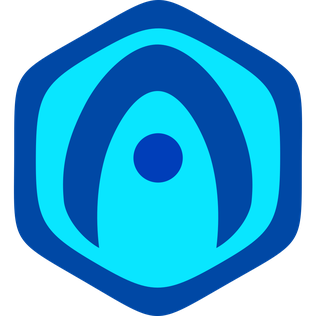 W
WVerge3D is a real-time renderer and a toolkit used for creating interactive 3D experiences running on websites.
 W
WWaveMaker is a private aPaaS software for building and running custom apps. WaveMaker provides Rapid API App Development & Deployment to build enterprise-grade multi-device apps, and leverages Docker containerization for an app-optimized infrastructure.
 W
WWebix is a JavaScript/HTML5/CSS3 UI toolkit for developing complex and dynamic cross-platform web applications. The framework is developed by the IT outsourcing company XB Software, headquartered in Minsk, Belarus.
 W
WThe Yahoo! User Interface Library (YUI) is a discontinued open-source JavaScript library for building richly interactive web applications using techniques such as Ajax, DHTML, and DOM scripting. YUI includes several core CSS resources. It is available under a BSD License. Development on YUI began in 2005 and Yahoo! properties such as My Yahoo! and the Yahoo! front page began using YUI in the summer of that year. YUI was released for public use in February 2006. It was actively developed by a core team of Yahoo! engineers.